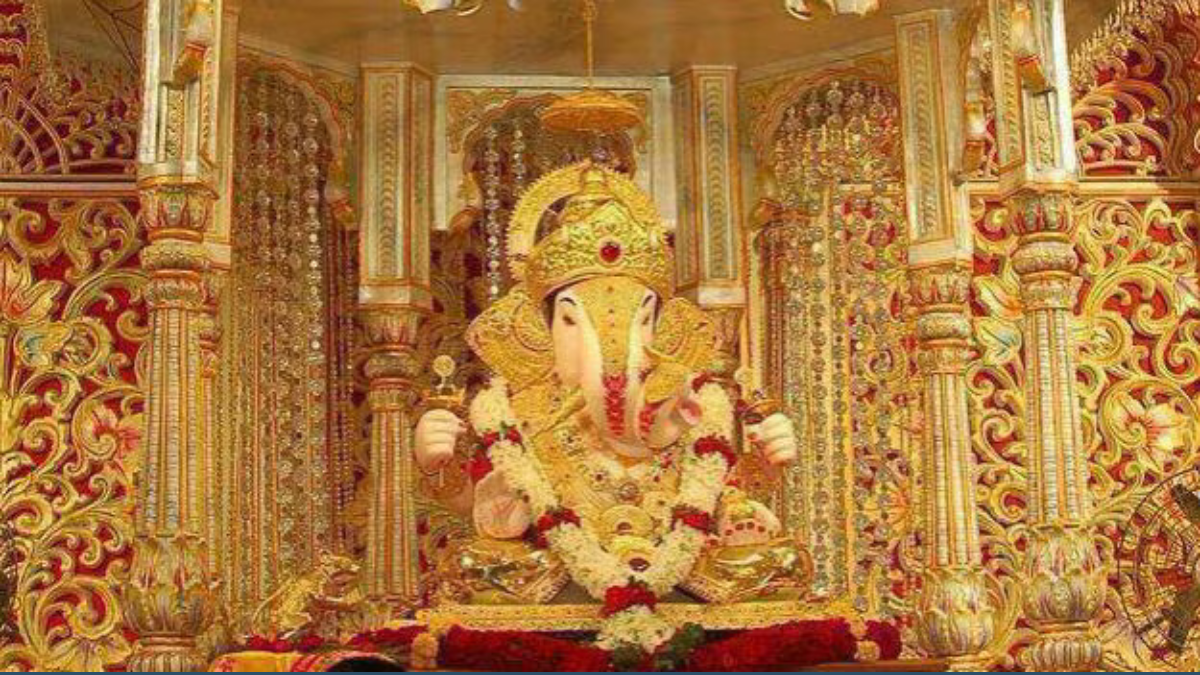Lord Ganesha, the beloved remover of obstacles and god of wisdom, is worshipped by millions across the world. His temples are not just places of prayer but also symbols of culture, faith, and grand architecture. From India’s historic shrines to globally renowned temples, some of these are massive in size and devotion. Here we explore the top 10 largest Ganesha temples in the world.
Top-10 Largest Ganesha Temples in the World by 2025
Lord Ganesha, the remover of obstacles and god of wisdom, is worshipped across India and worldwide. By 2025, several magnificent temples dedicated to him stand out for their size, devotion, and history. Here’s a look at the top 10 largest Ganesha temples in the world.
| Rank | Temple | Location |
| 1. | Dagdusheth Halwai Ganpati Temple | Pune, Maharashtra, India |
| 2. | Siddhivinayak Temple | Mumbai, Maharashtra, India |
| 3. | Kanipakam Vinayaka Temple | Andhra Pradesh, India |
| 4. | Ucchi Pillayar Temple | Tiruchirappalli, Tamil Nadu, India |
| 5. | Manakula Vinayagar Temple | Puducherry, India |
| 6. | Ganpatipule Temple | Ratnagiri, Maharashtra, India |
| 7. | Sasive Kalu & Kalu Ganesha | Hampi, Karnataka, India |
| 8. | Sri Varatharajah Selvavinayagar Temple | Den Helder, Netherlands |
| 9. | Ganesh Temple of Flushing | New York, USA |
| 10. | Sri Senpaga Vinayagar Temple | Singapore |
Dagdusheth Halwai Ganpati
The Dagdusheth Halwai Temple is one of the most famous Ganpati temples in the world. The idol here is 7.5 feet tall and beautifully decorated with gold and glass ornaments. During Ganesh Chaturthi, the temple attracts lakhs of devotees who come to witness the grand celebrations.
Siddhivinayak Temple
Located in Mumbai, the Siddhivinayak Temple is among the richest and most visited Ganesha temples. It is known for its golden dome and the deep faith devotees have in “Siddhi Vinayak,” the Ganesha who fulfills wishes. People from all walks of life, including celebrities and leaders, visit this temple regularly.
Kanipakam Vinayaka Temple
The Kanipakam Temple is unique because the idol of Lord Ganesha here is believed to be growing in size every year. With its ancient legends and sacred charm, this temple holds a special place in the hearts of devotees.
Ucchi Pillayar Temple
Sitting on top of a rock hill in Tamil Nadu, the Ucchi Pillayar Temple is carved out of stone and offers breathtaking views of Tiruchirappalli city. This rock-cut temple combines spiritual significance with architectural brilliance.
Manakula Vinayagar Temple
This temple in Puducherry is over 500 years old and is known for its colorful festivals and traditional rituals. The Manakula Vinayagar Temple is a blend of South Indian culture and faith, making it a must-visit spiritual spot.
Ganpatipule Temple
Located on the scenic Konkan coast, the Ganpatipule Temple is special because of its swayambhu (self-manifested) idol of Lord Ganesha. Situated by the sea, it offers both spiritual peace and natural beauty, attracting devotees and tourists alike.
Sasive Kalu & Kadale Kalu Ganesha
Hampi in Karnataka is home to some of the largest monolithic Ganesha idols, carved out of single stones. The Sasive Kalu and Kadale Kalu Ganesha statues are massive, with one idol standing nearly 18 feet tall, showcasing the grandeur of ancient Indian stone carving.
Sri Varatharajah Selvavinayagar Temple
This temple in Den Helder, Netherlands, is one of the largest Ganesha shrines outside India. It serves as an important spiritual and cultural hub for the Indian community in Europe, carrying forward the tradition of Ganpati worship abroad.
Ganesh Temple of Flushing
The Ganesh Temple in Flushing, New York, is one of the oldest and largest Hindu temples in the United States. It plays a vital role in preserving Indian culture among the Hindu community in North America, offering daily prayers and festive celebrations.
Sri Senpaga Vinayagar Temple
The Sri Senpaga Vinayagar Temple in Singapore is known for its Dravidian-style architecture and large chariot processions. It is a major spiritual center for devotees in Southeast Asia and continues to be a symbol of devotion and tradition.



 Which Indian City is Known as the Footwe...
Which Indian City is Known as the Footwe...
 Which Desert is known as the Cold Desert...
Which Desert is known as the Cold Desert...
 Top-10 News Media Companies in the World...
Top-10 News Media Companies in the World...







